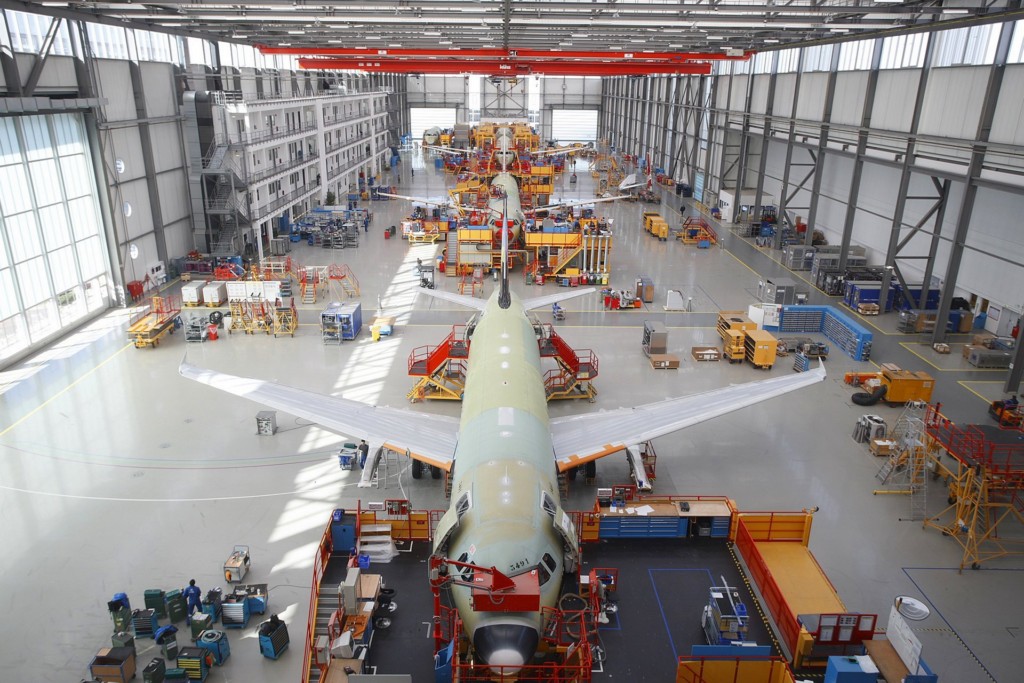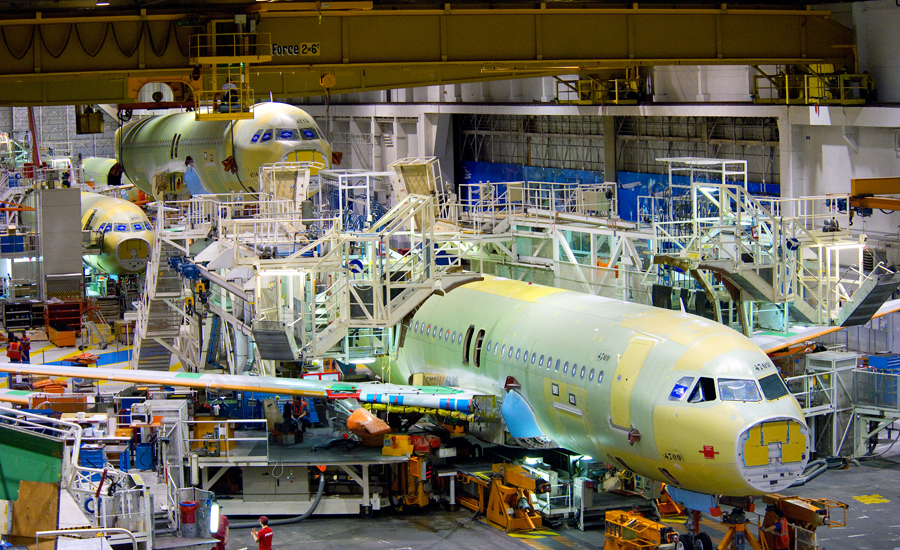
Have you ever wondered why aircraft always look green during in its production stage? Most of its structural items are coated in green before its final output. However green color element is not a paint. Its called Zinc Chromate primer.
The reason why green coating zinc chromate primer is used solves following purposes:
(1) Provide a base for the top coat or paint.
(2) Provide a barrier between harmful elements during maintenance and in atmosphere to prevent surface corrosion of base metal.
(3) Prevent corrosion of base metal Aluminium by giving a cathodic protection. Zinc is anodic to Aluminium thus susceptible to corrosion and hence save aircraft structure from galvanic corrosion.

Zinc chromate is not really a cover coat to prevent corrosion, it is a coating to better cause paint adherence. Aluminum quickly oxidizes in air and requires nothing more, because aluminum oxide itself is a sufficient protective barrier.
Aircraft aluminum is usually “Alclad” (a TM of Alcoa), and is natively corrosion free. It is an alloy of aluminum with copper, manganese and magnesium, to provide the physical properties needed in aviation; with a thin surface of pure aluminum, to protect the alloy. The alloy provides the strength, flexibility and fatigue resistance needed. And the pure aluminum surface provides corrosion resistance. Alclad aluminum comes with a plastic film to be removed only on use – when the pure aluminum film oxidizes in the air within minutes, forming a thin protective (and insulating) coating of aluminum oxide. This stops metallic reduction and protects the host metal – especially compared to iron and steel, where the oxides that also form, do not protect and eventually the host is lost.
The chemical family of Alodine (TM) is chromic acid based. It is more common today as the cleaning surface treatment to protect the aluminum from further oxidation and bond well to paint. There are essentially two families of product and two procedures: one for painters and one for electricians. To protect the surface for paint the cleaning of the oxides to metal and the new anodic film, a relatively thick film is created. But when electrical requirements prevail, gentler families of chromic acid are used with very short chemical exposure times. This results in very thin protective films, which are of course insulating, and are easily broken through to the pure aluminum beneath, and good electrical connection by the fastening hardware.
This different electrical requirement is because aircraft skins often carry electrical and electronic signals and “skin effects” are a large concern in RF applications. A standard procedure when installing a new antenna is after drilling the skin holes, to remove the paint and scour down to metal, then immediately alodine, wait 5 minutes and rinse off, and only then mount the antenna.
